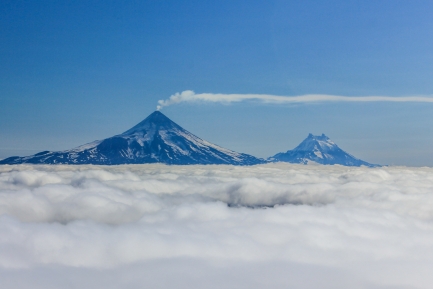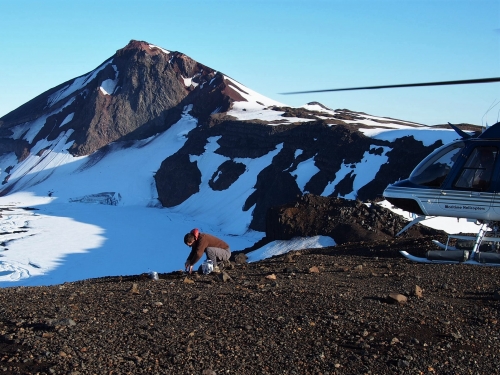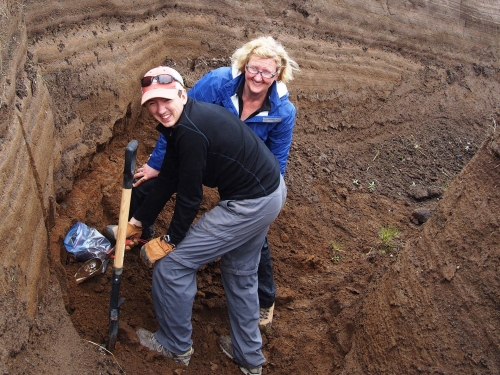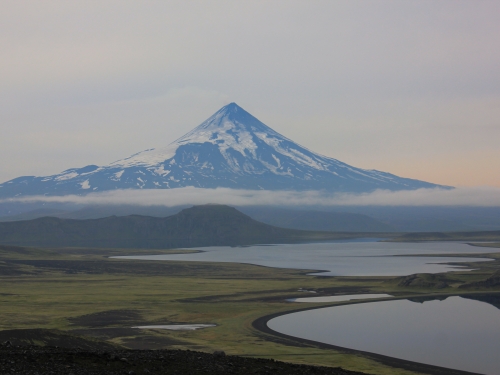
Shishaldin Volcano (left) and Isanotski Volcano (right) in 2015. Shishaldin emits a plume of volcanic gas that is carried by the wind. Isanotski may have originally had a form similar to that of Shishaldin, but it has not erupted recently, and it has been whittled away by the erosive power of ice. Shishaldin had large eruptions in 1999, 2004 and 2019, emitting plumes of volcanic ash over 10,000 feet into the air. The photo was captured during a helicopter flight to Shishaldin, where the research team collected rock samples of recent eruptions.
A new study, published today, March 10, in the journal Science, finds that, for the world’s most common type of volcano, magma with higher water content tends to be stored deeper in the Earth’s crust. The finding identifies what some scientists expect is the most important factor controlling the depth at which magma is stored and may bring experts one step closer to accurately forecasting volcanic eruptions.
SI-98-2022





